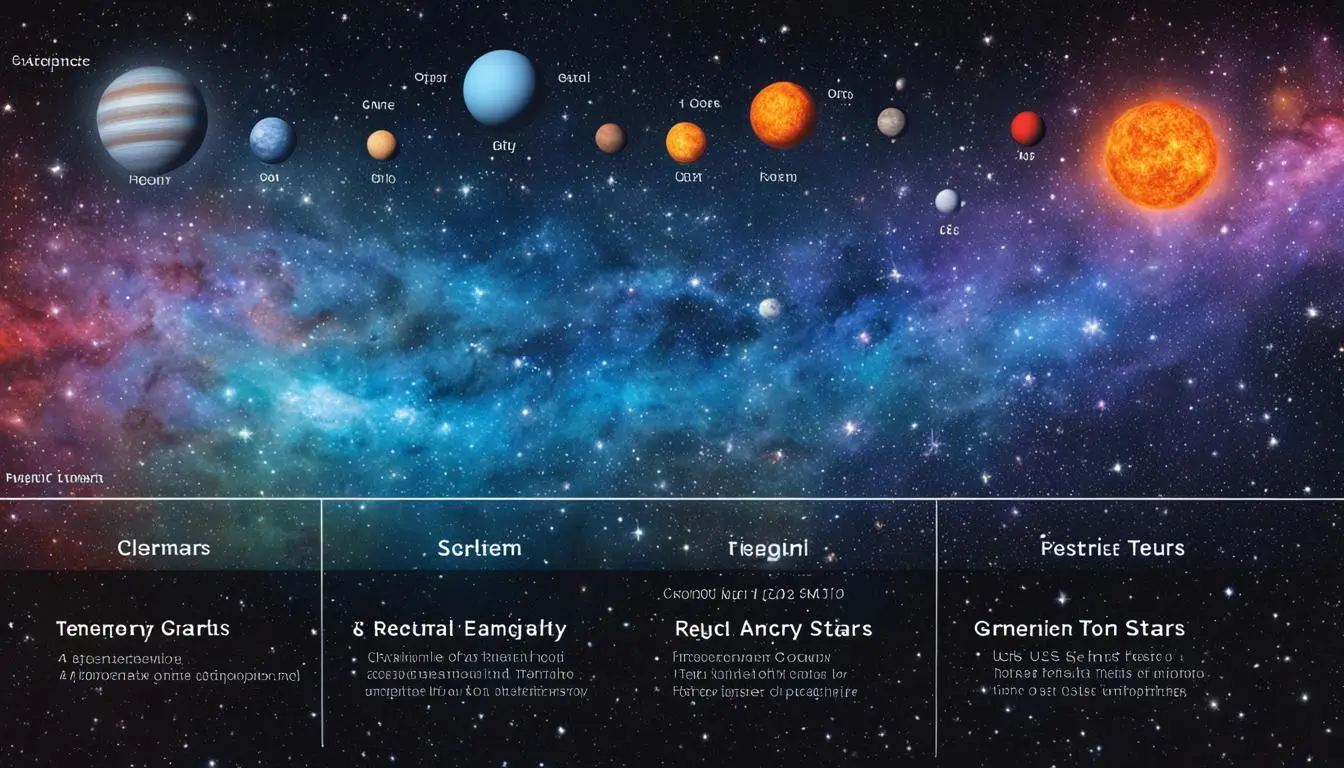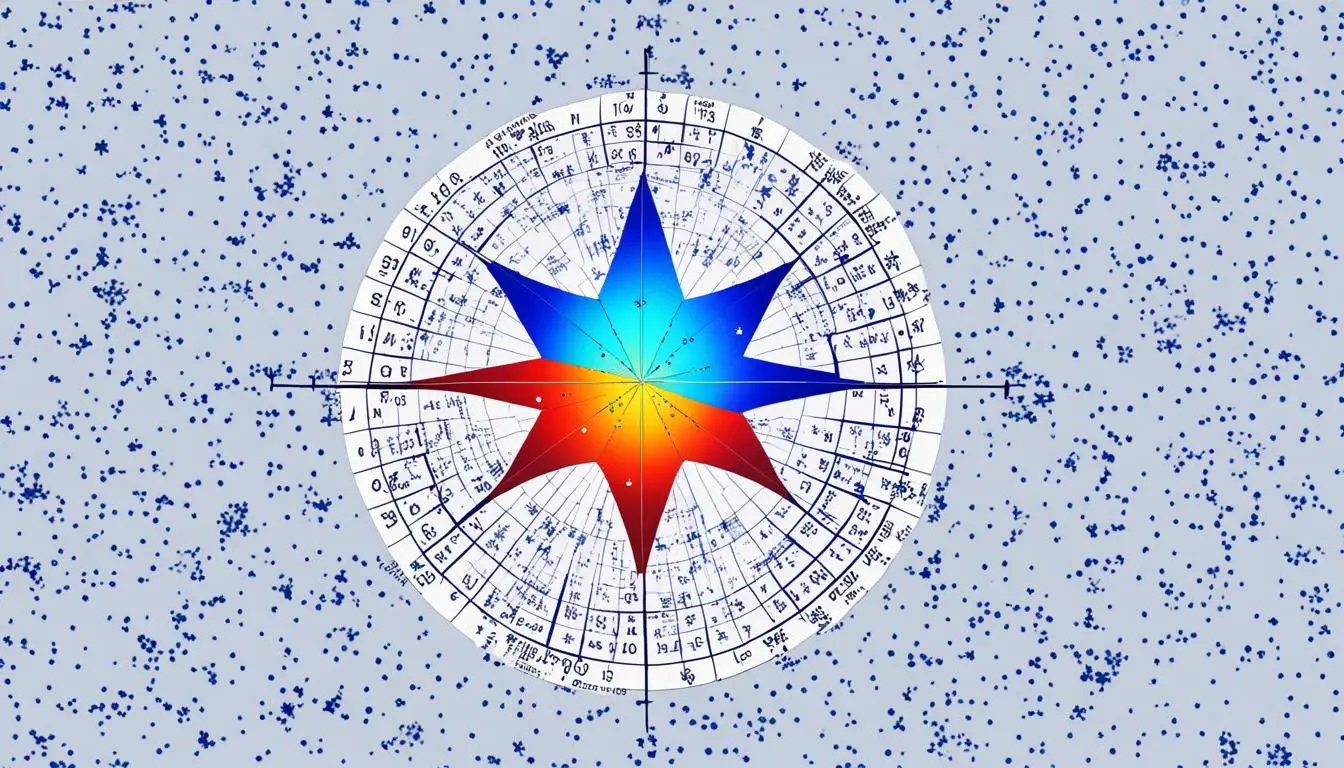Do you know that the Milky Way galaxy has over hundreds of billion of stars? When you have this much of something, you need to classify and sort them to understand them and keep track of them better. How are stars classified, though? What is the classification based on? Astronomers have found clever ways to sort these stars.
Check this out, too: Which Planet is Most Like Earth? Another Earth.
There are several star classification systems so when we wonder how are stars classified, there is more than one answer. However, the Harvard Classification System is key to sorting stars. It groups them by temperature. Stars range from hot O-type stars at 50,000 K to cool M-type stars at 3,000 K.

Our Sun is a G-type star with a surface temperature of about 5,800 K. This system helps astronomers understand stars, their evolution, and galaxies.
Star classification systems generally classify them based on their temperature, color, and spectral types. A hertzsprung-Russell diagram is a type of diagram that helps with these classification systems. It shows how a star’s brightness and temperature relate. This means that classification systems based on other type of systems.
That’s why star classification is a long topic. I will shorten it and focus on the important things in this article about how are stars classified.
Introduction to Stellar Classification
Stellar classification is putting stars into groups based on their traits, structure, age, specialties, how they die, what they become when they die, what they are made of, and others. We take several factors into account to classify the stars. The temperature of a star’s outer layer, it’s mass, size, and elements, are all factors that determine the star’s classification.
The temperature of a star affects the star’s color, which can be hot blue or cool red. The mass determines how the star will die and what it will turn into, a supernova or black hole. The elements can determine whether that start can be in a system with potential life.

Spectral types are a big part of star classification methods. We find their types by looking at what light stars give off. Each star has a unique light signature that shows its makeup and temperature. The spectral classification system uses letters from O to M to show different star types. O stars are the hottest, and M stars are the coolest.
How Are Stars Classified: Understanding Spectral Types
We have several classification systems like the Harvard Spectral Classification System, the Morgan-Keenan system, and the Hertzsprung-Russell Diagram. There are others, too, but these three are the central systems.
These classification systems classify stars based on their spectral types. I talked about the spectral types and that the hottest is O and it goes down from that. M is the coldest. These types come from analyzing a star’s spectrum and spotting specific absorption lines. The system has seven main classes: O, B, A, F, G, K, and M.
Each star class has a specific temperature and color. O-type stars has temperatures between 28,000 and 50,000 Kelvin and they look blue. The coldest M-type stars have temperatures below 3,500 Kelvin and they look red.
These temperatures determine a few stuff like it’s color. Another thing is their lifespan. For example, O-class stars burn brightly and hot but live only about 1 million years. On the other hand, M-class stars are dim and cool, potentially living up to 56 billion years.
There are also subclasses within each type, using numbers from 0 to 9 to include more detail.
The Harvard Spectral Classification System
The Harvard Spectral Classification System is one of the central star classification systems we use today. It was created in the 1880s at Harvard College Observatory. This system sorts stars by their spectral traits. It’s key to understanding how stars evolve and is still vital today.
Origins and Development
Annie Jump Cannon was a big part of improving the Harvard classification system. She sorted over 350,000 stars in her career, and Cannon’s work showed that star temperatures match their spectral classes. She could sort up to 200 stars per hour faster than before.

The Morgan-Keenan (MK) Classification System
The MK system takes stellar classification with a different approach, and most people consider it a step up from the Harvard Classification system. It combines spectral types with luminosity classes for a fuller picture of stars. This method helps astronomers understand a star’s temperature and energy output.
Combining Spectral and Luminosity Classes
In the MK system, we sort the stars using letters like O, B, A, F, G, K, and M. These letters show a star’s spectral type linked to its temperature. We add the numbers from 0 to 9 to fine-tune the classification. For example, our Sun is a G2 star with a temperature of about 5,800 K.
Roman Numeral Luminosity Classes
The MK system uses Roman numerals to show luminosity classes. These classes range from 0 (hypergiants) to VII (white dwarfs). Main sequence stars, like our Sun, are class V. Giants fall into class III, while supergiants are class I. With this, you can quickly grasp a star’s key features. For instance, a B3III star is a hot, blue giant.
The MK system shines in its ability to classify a wide range of stars. It covers rare O-type stars (only 1 in 3 million visible stars) to common M-type stars (75% of all stars). By mixing spectral and luminosity classes, the MK system paints a clear picture of stellar diversity.
Temperature and Color in Star Classification
Star temperature is key to understanding their colors and spectral traits and also how are stars classified. They help us to classify them as a starting point. As I mentioned, the Harvard system groups stars into seven main types: O, B, A, F, G, K, and M. These types show a temperature range from the hottest O-type stars to the coolest M-type stars.
The temperatures of stars vary a lot, and each type of temperature changes the star’s color. For example, Hot O and B stars look blue or bluish-white, while cooler K and M stars look orange to red. That’s why the colors of stars tell us a lot about a star. Blue giants are very hot and don’t live long, and they often die as a big supernova. On the other hand, red dwarf stars are common, burn slowly, and can shine for billions of years.
Also, the spectral traits of stars change with their temperature. Hydrogen lines in star spectra are weak in hot O stars but stronger in cooler stars. These features, along with color and temperature, help determine where to put a star easily in a star classification system.
Hertzsprung-Russell Diagram: A Visual Guide to Star Types
The Hertzsprung-Russell diagram sorts stars by their brightness and temperature. This diagram plots stars’ temperatures against their brightness. It captures the wide range of stars and how they change over time. By looking at it, astronomers can guess a star’s past and future.
Conclusion
Understanding how are stars classified and learning about star classification methods are confusing. There are several things to look at, including temperature, mass, size, and others. The systems we use now help to make this process way easier, though, so you don’t have to get confused all the time when you want to understand the stars.
The Harvard Spectral Classification System sorts stars from hottest to coolest by their surface temperatures. Our Sun is a G2 star with a surface temperature of about 5500°C. The brightest star in our sky, Sirius, is A0. On the other hand, the red supergiant Betelgeuse is an M2 star.
The Hertzsprung-Russell Diagram shows the link between a star’s luminosity and temperature. It’s key for studying how stars evolve, from young T Tauri stars in the Orion Nebula to their final stages.
There are other star classification systems, too, but we use two of these as the main guidance. The Harvard Spectral Classification is probably the most useful and used star classification system to classify stars of each level, size, temperature, mass, and color.
FAQ
What are the key factors in star classification?
The main factors include temperature, mass, size, and chemical makeup.
What is the Harvard Spectral Classification System?
Developed in the 1880s at Harvard College Observatory, it uses letters O, B, A, F, G, K, and M. These letters classify stars from hottest to coolest. Each class has numbers 0-9 for further detail.
How are spectral types determined?
We find its spectral type by analyzing a star’s spectrum and spotting specific absorption lines. Each type relates to a temperature and color range.
What is the Morgan-Keenan (MK) Classification System?
The MK system blends the Harvard spectral classes with luminosity classes, shown by Roman numerals. This gives us info on both temperature and how bright the star is.
How is star color related to temperature?
Star color is linked to its surface temperature. Hot stars look blue or white, while cooler ones look orange or red.
What is the Hertzsprung-Russell (H-R) diagram?
The H-R diagram shows stars by their brightness and color. It helps us see how different stars and their stages of evolution relate to each other.